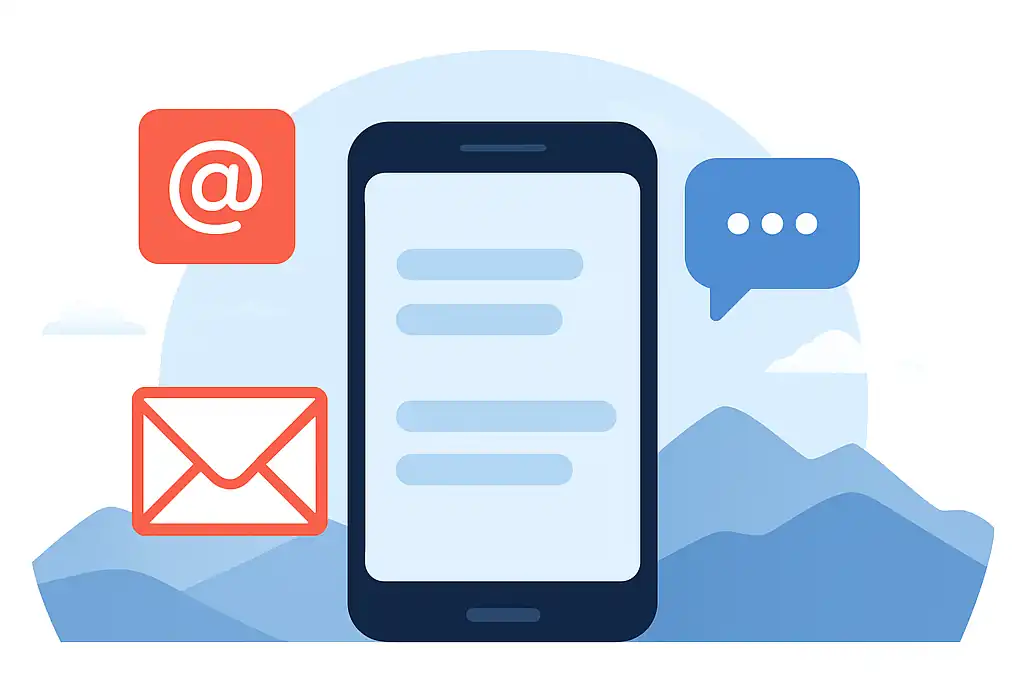Use Cases
Explore Messaging Use Cases You Can Apply to Your Business
See how leading companies use Procode to automate communication across channels – from transactional alerts to personalized campaigns. And if you need something different, you can build it.

Campaigns & Optimization
Automated Marketing Workflows
A clothing brand automates seasonal campaigns with scheduled reminders and promotions — saving time and ensuring consistent customer engagement.
Sales & Conversion Tracking
An online retailer tracks purchases from email campaigns and adjusts future messaging based on conversion rates.
Customer Lifecycle Campaigns
A financial service provider nurtures new users with a welcome email followed by automated tips — guiding them through onboarding and increasing product adoption.
Personalized Promotions & Offers
A beauty brand analyzes past purchases and sends tailored skincare routine suggestions via email.
Event-Triggered Messaging
A car dealership automatically reminds customers when their vehicle is due for service — reducing missed appointments and improving retention.
A/B Testing & Optimization
A travel company A/B tests promotional emails to identify the most effective message — optimizing campaign performance and increasing bookings.
Personalization & Engagement
Real-Time Personalization
A customer browses a product, and within seconds, they receive a personalized discount offer via SMS.
Behavioral Promo Targeting
A user regularly buys coffee each morning, so the system sends a timely promo code before their usual purchase — increasing conversion through behavior-based targeting.
Onboarding Welcome Message
A customer signs up for a service and instantly receives a welcome message with next steps.
Content Recommendations
A streaming service recommends new shows based on a user’s recent viewing history.
Omnichannel Travel Notifications
A travel agency sends flight booking details via email, followed by a WhatsApp reminder before departure.
Loyalty & Customer Retention
Cart Abandonment Recovery
A customer abandons their cart, and 24 hours later, they receive a follow-up email with a discount to complete the purchase.
Loyalty Rewards
A retail store automatically rewards customers with a personalized message after their 5th purchase — encouraging repeat buying and loyalty.
Re-Engagement Campaign
A fitness app sends a special discount to users who haven’t logged in for 30 days.
Upsell Follow-Up
After purchasing a laptop, a customer receives an automated email suggesting compatible accessories – increasing average order value through timely upsell.
Churn Prevention
A subscription service detects decreasing user activity and offers an exclusive discount to retain them.
Operational Notifications & Transactions
Transactional Messaging
A customer makes a purchase, and they instantly receive an SMS confirmation with order details.
Security Alerts
A bank detects unusual login activity and sends an immediate security alert via SMS and email.
Appointment Reminders
A medical clinic sends patients an SMS reminder a day before their appointment — reducing no-shows and improving schedule efficiency.
Booking Confirmations
A user completes a hotel booking and receives a confirmation email with reservation details.
Account Notifications
A financial institution notifies users of password changes or suspicious login attempts.
Channels
Channel Preference
Customers receive transaction confirmations via their preferred channel — email for some, Viber for others — based on behavioral data to increase engagement and relevance.
Fallback Routing
A customer cannot receive a marketing message via Viber due to network issues or app inactivity, so the system automatically delivers the message via SMS to ensure it reaches them.
Cross-Channel Engagement Journeys
A retail brand sends a promotional email about a sale, followed by an SMS reminder a few hours before the sale ends.
Automated Multi-Channel Campaigns
A global electronics brand runs a launch campaign for a new smartphone — combining email invites, social media ads, and SMS/AppPush reminders to maximize reach and conversions.
Support & Customer Assistance
Proactive Customer Support
An internet provider sends proactive SMS alerts about upcoming maintenance or service disruptions — helping customers prepare and reducing inbound support inquiries.
Automated Status Updates
A customer submits a support request and receives an automated update via Viber when the issue is resolved.
Automated Feedback Collection
After resolving a support case, a company automatically sends a satisfaction survey via WhatsApp — helping improve service quality through real-time feedback.
Security & Verification
Two-Way Verification
A banking app uses secure two-way SMS messaging to verify high-value transactions — reducing fraud and improving user trust.
Account & Security Alert
A user receives an immediate SMS alert when an unknown device attempts to access their account.
Fraud Prevention Notifications
An e-commerce platform detects unusual purchasing patterns and sends a verification request via Viber – helping prevent fraudulent transactions in real time.
Multi-Factor Authentication Reminders
A financial institution periodically reminds customers to update their two-factor authentication settings – strengthening account security over time.
Data Breach Alerts
A company sends an SMS and email warning users about a security breach, advising them to update their passwords.
Frequently Asked Questions
Have questions?
Get a free consultation contact us — we’re here to help.